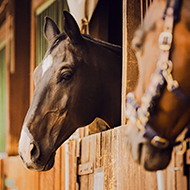Scientists develop tool to reduce inherited disease

Creators of the new tool say it is more effective than using hip and elbow scores alone.
Scientists have developed a new tool that will allow dog breeders to calculate the risk of passing down inherited conditions more efficiently.
Estimated Breeding Values (EBVs) have been created to help breeders reduce the risk of hip and elbow dysplasia and will be launched at Crufts this week.
This new resource uses data from the BVA/Kennel Club hip and elbow schemes to determine the risk of inheriting these conditions for each individual dog.
Scientists from the Animal Health Trust (AHT), the Roslin Institute and Royal (Dick) School of Veterinary Studies, worked alongside the Kennel Club to develop the tool.
Creators say EBVs will be more effective in reducing the risk of developing hip and elbow dysplasia than using elbow and hip scores alone.
Dr Tom Lewis, quantitative geneticist for AHT, explained: "We have been working with the Kennel Club for a number of years to develop EBVs.
"EBVs are a more accurate indicator of genetic predisposition to hip and elbow dysplasia, because in their calculation we use the pedigree to link hip and elbow scores for an individual dog with that of all its relatives thereby making more effective use of the scoring data provided by the BVA/KC schemes.
"They allow more accurate selection since only the genetics is inherited across generations."
EBVs are now available for 15 different breeds, including the German shepherd, border collie, Labrador and Rottweiler. It is hoped this number will rise as more breeders hip and elbow score their dogs the the BVA/KC schemes.
The resource has become part of the Kennel Club's existing Mate Select service - a resource that aims to help breeders to make informed choices.



 Zoetis has launched a new survey to identify management techniques for Equine Herpes Virus (EHV).
Zoetis has launched a new survey to identify management techniques for Equine Herpes Virus (EHV).